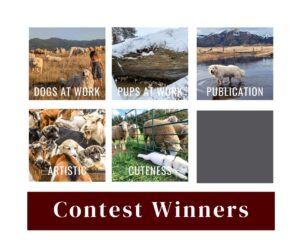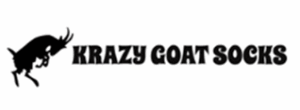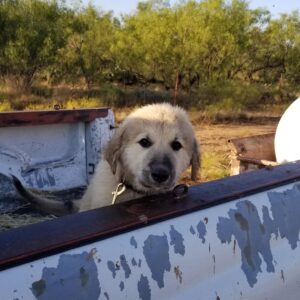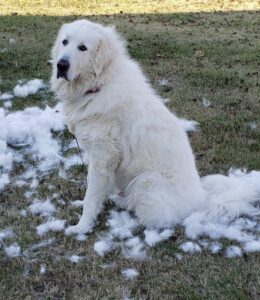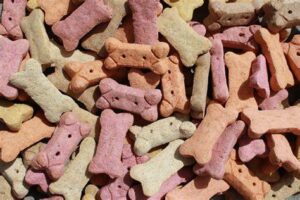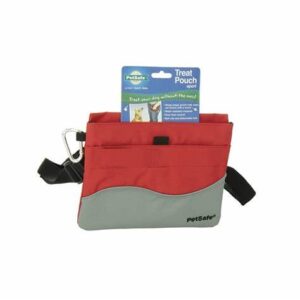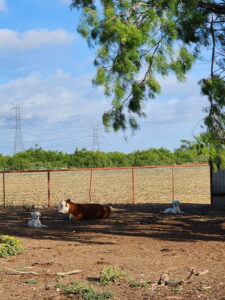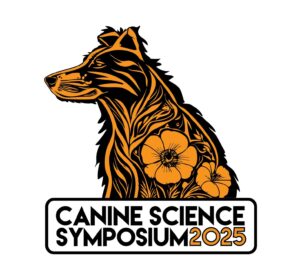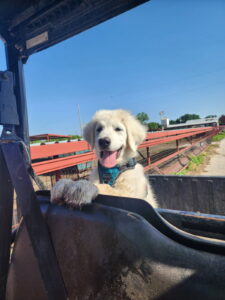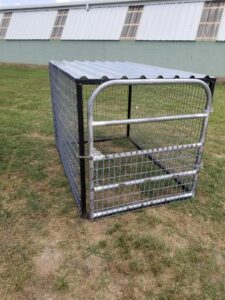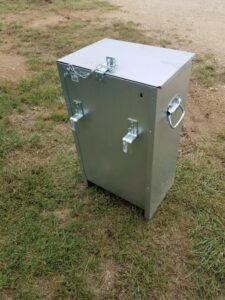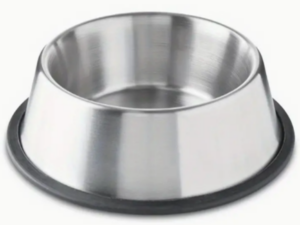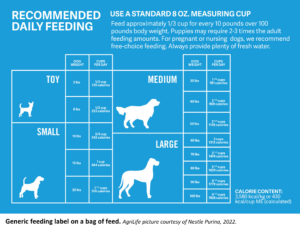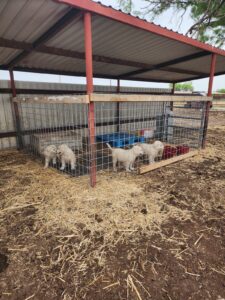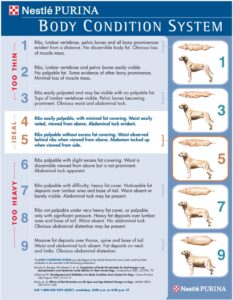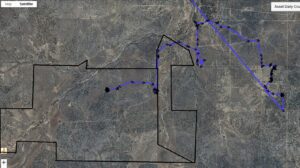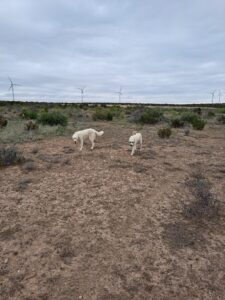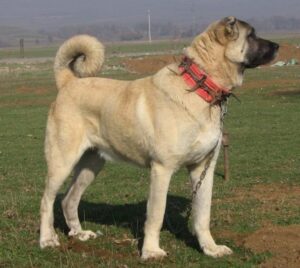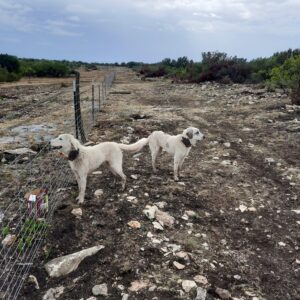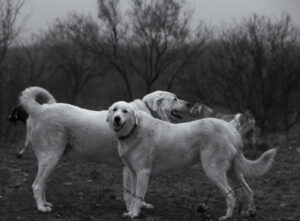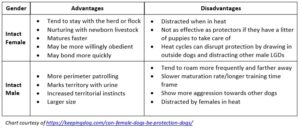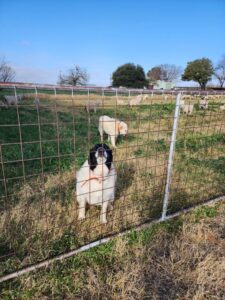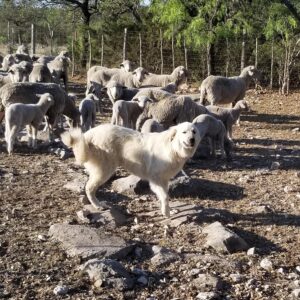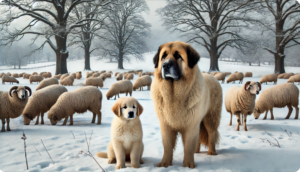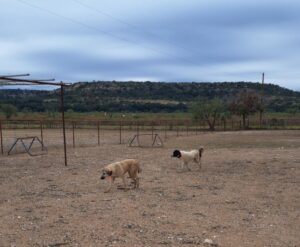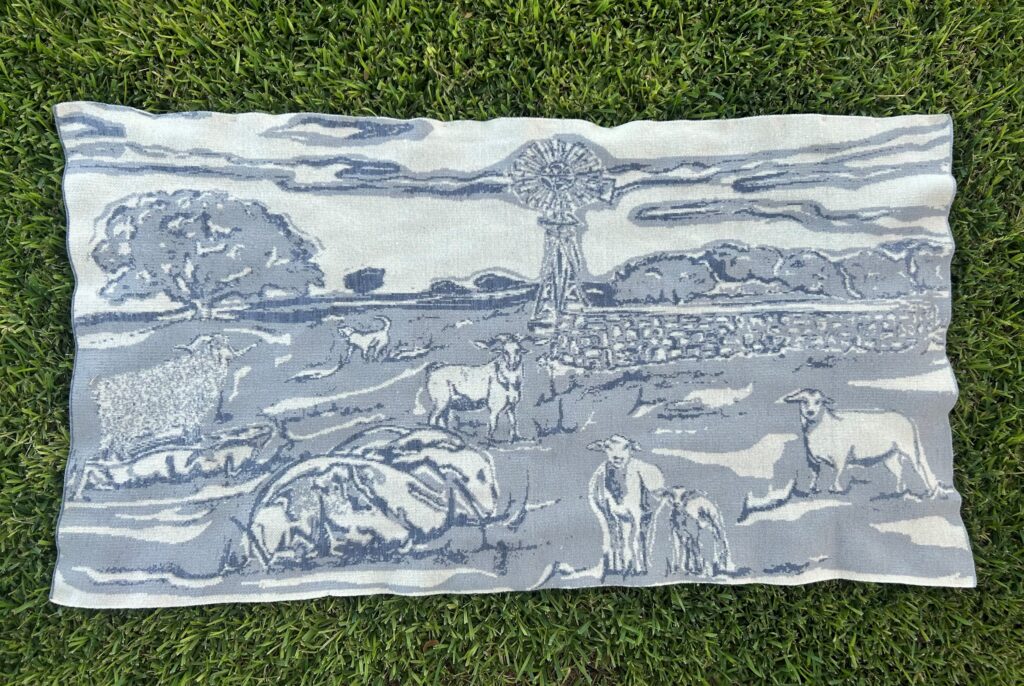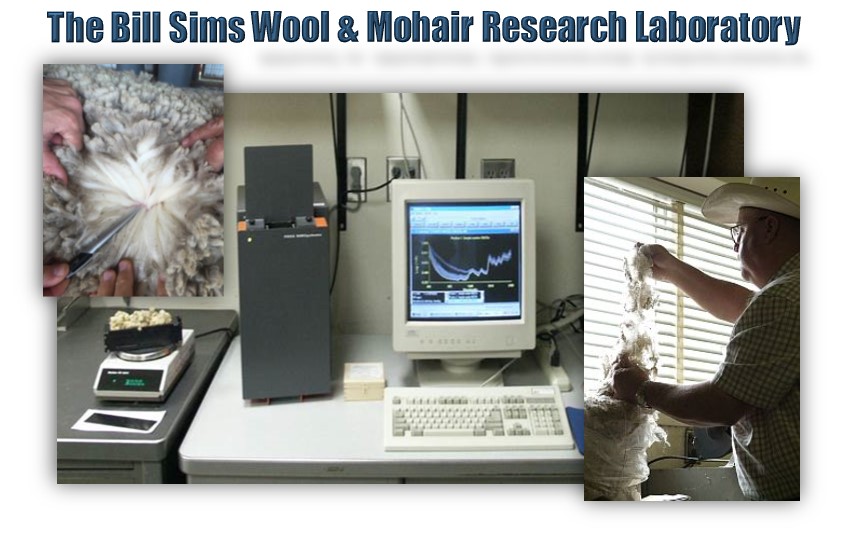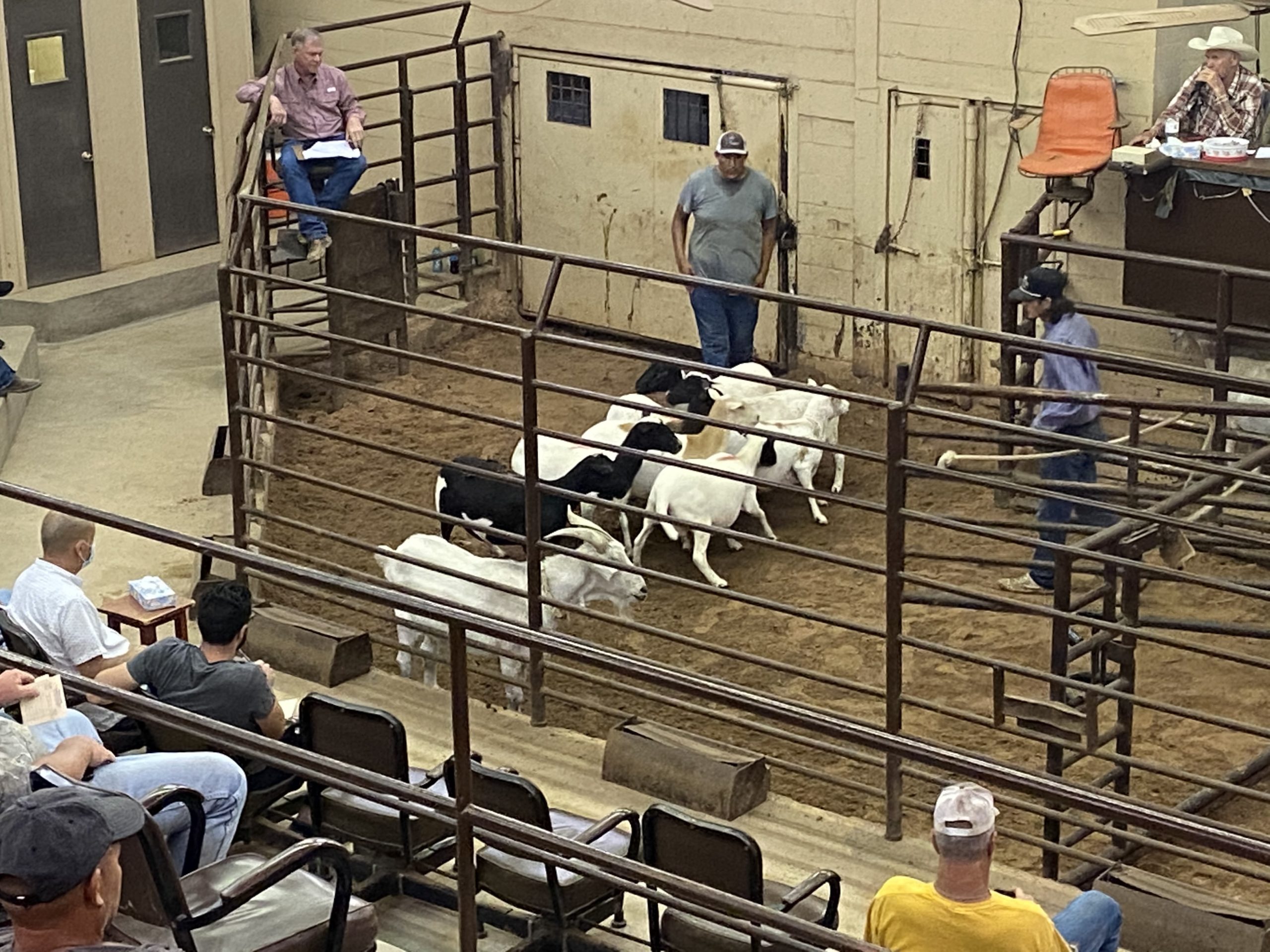
Last month, the AgriLife Center in San Angelo hosted its annual field day on August 15th, with over 100 people attending the event. It was
followed by the two-day AgriLife Extension, which hosted the annual Sheep and Goat Expo in San Angelo at the Spur Arena. The event featured workshops, demonstrations, and guest speakers from across the US. A tradeshow was also part of the event, with vendors exhibiting equipment, supplies, and different breeds of sheep and goats.
I gave a workshop and demonstration on grooming LGDs at the Expo this year. LGD Waylon got to visit everyone at the Expo and enjoyed the time away from the Center. He got lots of pets and a few treats as well while he was waiting to be used in my grooming demonstration.
AgriLife Livestock Guardian Dog Program: Update and Events
 The Texas LGD Association is hosting a field day on October 25 at the Texas Ranger Hall of Fame in Waco. The event runs from 9 am to 5 pm and will feature workshops, vendors, dog breeders, and an in-person association meeting. Lunch will be included with registration. You can register online at www.texaslgdassoc.org.
The Texas LGD Association is hosting a field day on October 25 at the Texas Ranger Hall of Fame in Waco. The event runs from 9 am to 5 pm and will feature workshops, vendors, dog breeders, and an in-person association meeting. Lunch will be included with registration. You can register online at www.texaslgdassoc.org.
We also have Dr. Katherine Lord scheduled to present at our November webinar. Dr. Lord will share data from Darwin’s Ark Canine DNA Project’s working dog collection, of which she is a member. We highly encourage all LGD owners to participate in the working dog project to help gather data on all types of working dog breeds. Check our Facebook page @TAMUlivestockguarddog for more information and visit the events page on the Center’s website to register as the event approaches.
Training LGDs
Here is part four of a six-part series on training Local Guard Dogs (LGDs). Are livestock guardian dogs (LGDs) “untrainable”? This month, we will cover how to train an LGD with livestock.
Training LGDs for Livestock
Training LGDs to oversee livestock isn’t common everywhere. Dogs and livestock have unique personalities that require flexible training
methods. Some dogs naturally adapt to living with livestock and bond quickly, while others may struggle to understand that they can’t interact with the livestock the same way as their littermates. Bonding and training the puppy at the same time is crucial because puppies are more likely to learn commands when they’re young. Additionally, LGDs need to be bonded with livestock between 5 and 14 weeks old. Knowing this will help you prepare for the important early stages of LGD training.
Similarly, each type of livestock has its own temperament. Some may readily accept the dogs, while others may show aggression. Producers should be prepared for these challenges and understand that patience and creativity are essential to overcoming them. These are not obstacles but opportunities to demonstrate resilience and resourcefulness in training. Your creativity can be a powerful tool, inspiring innovative solutions to these challenges. Additionally, for those new to LGDs, starting fresh is often the most difficult part. Once a producer has some trained LGDs working with livestock, introducing and training new puppies becomes much easier. Not only will the puppies naturally mimic the behavior of the trained LGDs, but the trained LGDs might also “correct” them by growling or pinning them to the ground when they misbehave.
Although these dogs are meant to live in packs, we recommend starting with one weaned puppy and adding a second dog once the first is fully mature. A single dog bonds more easily with the livestock, and it’s simpler to train one puppy than two. Pairs of puppies can feed off each other’s energy, causing twice as many problems with the livestock as a single dog. Additionally, a single dog tends to stay closer to the herd for security.
There are many ways to train LGDs, and we are sharing the method that works best for our operation. Others may argue that leash-training or acclimating a dog to riding in a vehicle is unnecessary. What follows are step-by-step instructions. Producers should modify these instructions based on the animals’ individual personalities and specific needs. These steps are designed for someone new to LGDs who needs a mentor to help train puppies.
How to Train LGDs for Livestock

Weaned puppies on their way to a bonding pen at the AgriLife Center. AgriLife photo courtesy of Costanzo 2022.
Start on limited obedience training immediately. Train them to remain calm and avoid jumping, chasing, or biting people. Puppies can be trained in the area where they are being bonded to livestock. Bonding is different from training a pup. Bonding refers to the puppy creating a relationship with livestock. Training involves human interaction to teach the puppy how to behave and follow commands.
- Purchase an 8-week-old weaned puppy. Allow the puppy to acclimate to its new home and get used to the livestock right away. At this stage, the puppy is old enough to be placed in a bonding pen on its own.
- We start leash and tether training with puppies at nine weeks old and give them vehicle rides for 5-10 minutes each week. Begin with just two minutes of leash and tether training twice a week. Take the puppy on walks around the bonding pen and property to help it learn to walk on a leash. Always call them by their name and reward the puppy when it comes to you, and if it walks well on the leash. Also, the tether and vehicle training.
- Gradually extend leash and tether training sessions over time. We add two minutes to the training each week during the bonding period, which ends at six months of age. Although the puppies have already bonded with the livestock by fourteen weeks, they still need to learn how to behave around them. The pup also needs enough time to master obedience training thoroughly.
- Keep pups calm around livestock with obedience training. Learn the dogs’ body language to prevent excitement. Recognize their cues and stop unwanted behavior before it begins. Distract them with training as soon as they show signs of misbehaving or becoming overly excited near the livestock.
- Training should be conducted with the main livestock group to help them get accustomed to the new puppy. Bring the pup into the pasture on a leash so it can meet the other animals, which helps build a bond. Keep the puppy calm during this process. Correct the pup if it starts barking or lunging at the animals. Once it behaves well, reward it with treats and attention.
- When the puppy is calm, allow the livestock to approach it. If they seem unsure about the puppy, approach them slowly and gently. Let

LGD puppy dragging its leash during training with livestock. AgriLife photo courtesy of Costanzo, 2019.
both the livestock and the puppy smell each other. If the puppy gets too excited, redirect its attention with training commands. If the livestock run away, it means they’re not ready to meet the puppy yet. It’s important to introduce the livestock to the dog gradually. The best way is to take small steps to help them become accustomed to the puppy. This process might take several weeks, but gradual training will make it easier to remove the puppy from the bonding pen once the main herd is comfortable with it. t. t.
- Once the puppy and livestock are comfortable with each other, let the puppy walk on a leash. You can then loosen the leash so the puppy can move freely. We suggest using a long lead to quickly control the puppy if it starts to chase or play with the livestock. This helps ensure the safety of both the puppy and the livestock.
- Once the pup does well, lose the leash and remove it. Producers must supervise the pup off-leash until they are confident the pup will not exhibit poor behavior when left unattended. The same is true of the livestock – do not leave the pup alone with them until you are sure that none of them will exhibit bad behavior toward the dog. This supervision is crucial for maintaining control and ensuring the safety of both the puppy and the livestock.
Bonding Project Update
Round 7 Pups
The pups are all doing well and have been released with their cattle into two training pastures at the Center. Diesel and Delta are bonded well to their cattle and have been staying close to them. The other two pups, Dozer and Duke, have been staying in their pasture, but they haven’t been staying as close to the cattle as we’d like. Hopefully, they will get settled in their new pastures and start hanging out with the calves more as time goes on.
In closing
If you enjoyed this monthly LGD blog, please remember to subscribe using this link: The Guardian Way | Texas A&M AgriLife Research and Extension Center at San Angelo.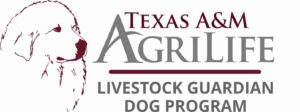
Do you have any feedback about this article, or would you like to propose topics for future articles, webinars, or workshops? Don’t hesitate to get in touch with me at bill.costanzo@ag.tamu.edu or 325-657-7311.
Are you seeking information on LGDs? Please visit our website, which features factsheets, global research on LGDs, and case studies we have conducted.
Follow us on our social media platforms and share them with your friends and family!
Facebook, Instagram, YouTube: TAMUlivestockguarddog
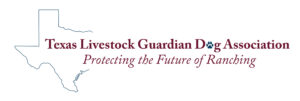 Be sure to visit the Texas LGD Association online! You can follow the organization on Facebook or YouTube under @TexasLGDAssociation or visit its website.
Be sure to visit the Texas LGD Association online! You can follow the organization on Facebook or YouTube under @TexasLGDAssociation or visit its website.
Texas A&M AgriLife provides equal opportunities in its programs and employment to all persons, regardless of race, color, sex, religion, national origin, disability, age, genetic information, veteran status, sexual orientation, or gender identity. The Texas A&M University System, U.S. Department of Agriculture, and the County Commissioners Courts of Texas Cooperating.




